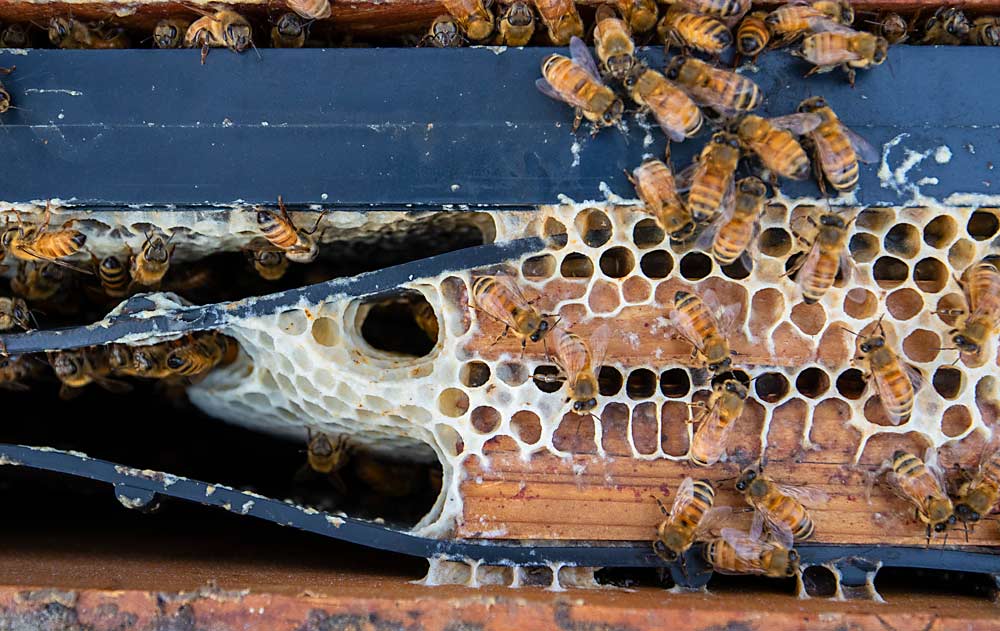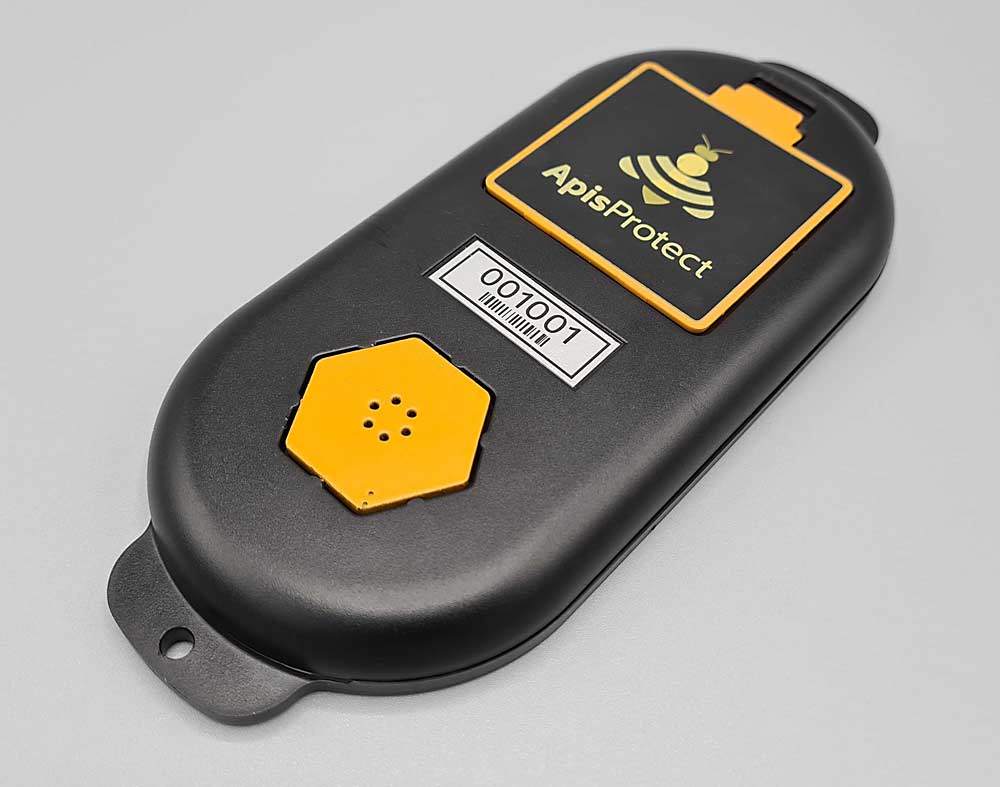
For more than a decade, the news about honey bees has been “doom and gloom.” Pesticides, parasites, environmental changes and other stressors have combined to decrease bee populations worldwide, and media reports offered little if any hope.
For Boris Baer, a professor of entomology at the University of California, Riverside, it’s been frustrating to watch, because he thinks the tide is turning. Researchers spent years figuring out what ails the honey bee, and they’re ready to focus on management tools.
“We’ve done our homework over the last decade, and now we can start to think about solutions,” he said. “It’s an exciting time.”
To aid the development of bee health tools, the UC Office of the President awarded $900,000 to a team of bee researchers and engineers from UC’s Riverside, Davis, San Diego and Merced campuses. Baer, the principal investigator, said the grant will create one of the largest honey bee health networks in the country and will provide funding for three years. They’ve already applied for follow-up funding.
The project team is working closely with the beekeeping community to develop its goals and methods, Baer said.
“We anticipate that the UC project may benefit the health of our bees,” said Jacob Dickinson, communications director for Long Beach Beekeepers. “Giving the project access to the genetic diversity of our bees, along with health data, may help in their efforts to develop more robust stock.”
The project has three main development goals. The first is to improve bee breeding — a particular focus of Baer’s work. California has populations of wild Africanized honey bees that can tolerate the pesticides, diseases, parasites and climatic factors that have done significant damage to managed bee populations. Those wild bees and their resistant traits are a “genetic gold mine” for bee breeders, he said.
The second goal: develop new medications and treatments for sick bees. Over the past several years, researchers identified key components in bee immune systems that will help them develop new health tools. Certain honey bees generate molecules that make them more tolerant of pesticides and parasites. New technology will enable scientists to isolate those molecules and use them as a basis for new drugs, Baer said.
The third goal is to give beekeepers better tools to monitor colony health. Development of remote sensors that can be placed inside hives — “electronic veterinarians” that can translate bees’ complex chemical language, pick up on early signs of declining bee health and communicate recommendations to beekeepers — will be crucial for early detection. Once the colony collapses, it’s too late to do anything about it, Baer said.
There are such sensors currently on the market, but they often have complicated setups with lots of cables or wiring that beekeepers have trouble deploying. The ideal sensor would work remotely, sit unobtrusively in the center of the colony (where the majority of bee communication is happening) and give beekeepers warning of declining bee health when there’s still time to save the colony. The sensor wouldn’t just flood beekeepers with raw data but would instead provide recommendations to help them make decisions. It would be accepted by bees and easily integrated into beekeeper routines, he said.

One sensor that fits UC’s criteria might already be on the market. Irish company ApisProtect just launched the ApisProtect Monitor, a honey bee monitoring platform, in December. Baer didn’t comment on this product specifically.
Head of marketing Aoife O’Mahony said the company has spent the past seven years developing the monitor, testing it with beekeepers around the world. Placed inside hives, the devices continuously monitor hive conditions and activity levels, with an early warning system designed to prevent hive deterioration or loss. And rather than just providing raw data, they deliver insights and recommendations directly to beekeepers on their smart devices, he said.
The ApisProtect Monitor works remotely, with no protruding wires or cables that would hamper beekeepers’ day-to-day operations. The battery-powered devices use wireless technology to communicate directly to base stations in the apiary. This reduces how often beekeepers need to open hives, an activity that can be extremely disruptive to colonies, O’Mahony said. •
—by Matt Milkovich






[…] Read the full article by Matt Milkovich in the March edition of Good Fruit Grower […]